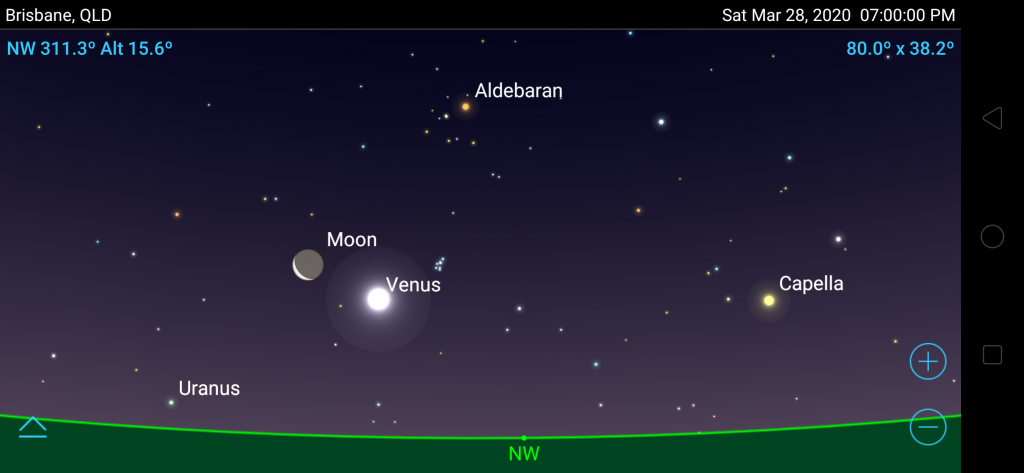In Coronavirus self isolation or want to keep busy during a likely lockdown? Being stuck at home doesn’t mean you have to be bored. Just look up! Look for the hashtag #LockdownAstronomy on this website over the next few months for fun observing activities.
This first #LockdownAstronomy post is about looking at dazzling Venus in the evening twilight. Definitely no telescope required.
What will I see?
The planet Venus can easily be seen as evening twilight comes to an end. Just look low above the North West horizon for a dazzling white star-like object. Venus will reach peak brightness on Tuesday 28 April 2020. If you live in a location away from street lights, Venus may even be bright enough to cast a faint shadow around that date.

Look a little closer
If you watch Venus or nearby bright stars, they may start to do something strange as they move* towards the horizon. They may start to ‘twinkle’. This means they will appear to move slightly or change colour. This occurs as the light from the star or planet is spread out by the Earth’s atmosphere.
The twinkling effect (https://en.wikipedia.org/wiki/Twinkling) is less likely to be visible with Venus because it is not a point light source. This is one way that you can often tell the difference between a star and planet without having access to a telescope. Stars twinkle and planets usually don’t.
* Note that what is really moving is the Earth. The Earth is rotating from West to East making celestial objects such as the Sun or stars appear to move in the opposite direction.
What has this got to do with Unidentified Flying Objects?
It isn’t uncommon for observers unfamiliar with the night sky to notice strange objects low on the horizon that seem to be hovering and changing colour. These mysterious objects can be referred to as ‘Unidentified Flying Objects’ because they seem to be flying. These objects are usually either twinkling stars, planets, high altitude balloons or high altitude planes with their navigation lights flashing.
More about ‘Unidentified Flying Objects’ can be found on Wikipedia (https://en.wikipedia.org/wiki/Unidentified_flying_object).
Finally, if you have young children you might want to watch the song Twinkle, Twinkle Little Star on Youtube. The words for the song can be found here: https://en.wikipedia.org/wiki/Twinkle,_Twinkle,_Little_Star